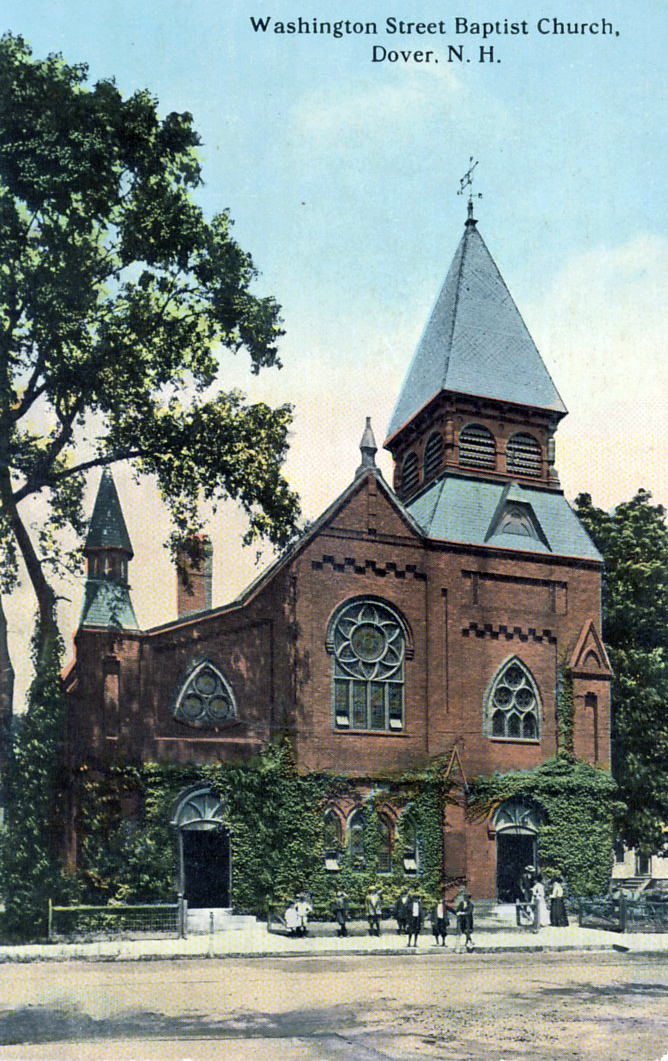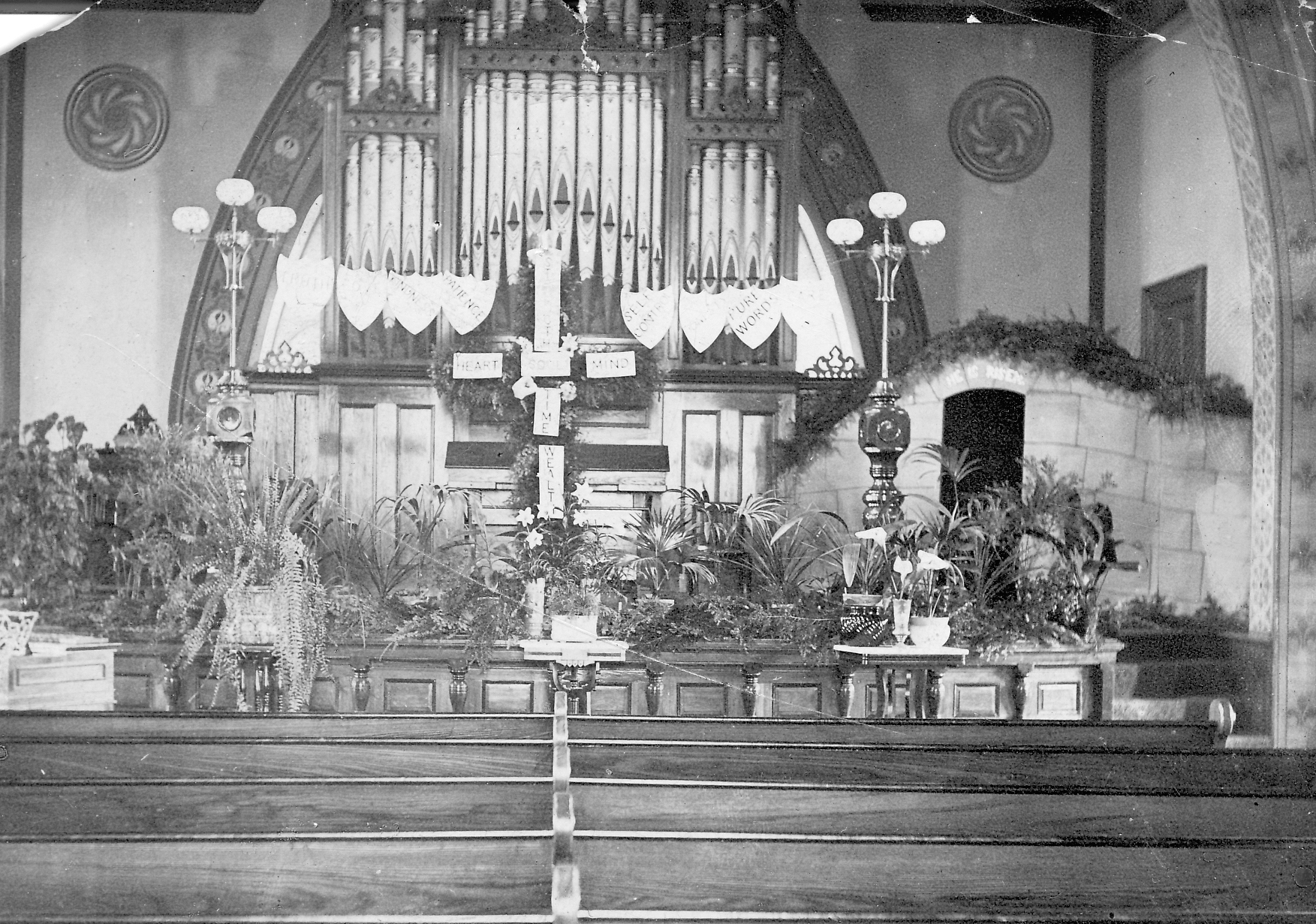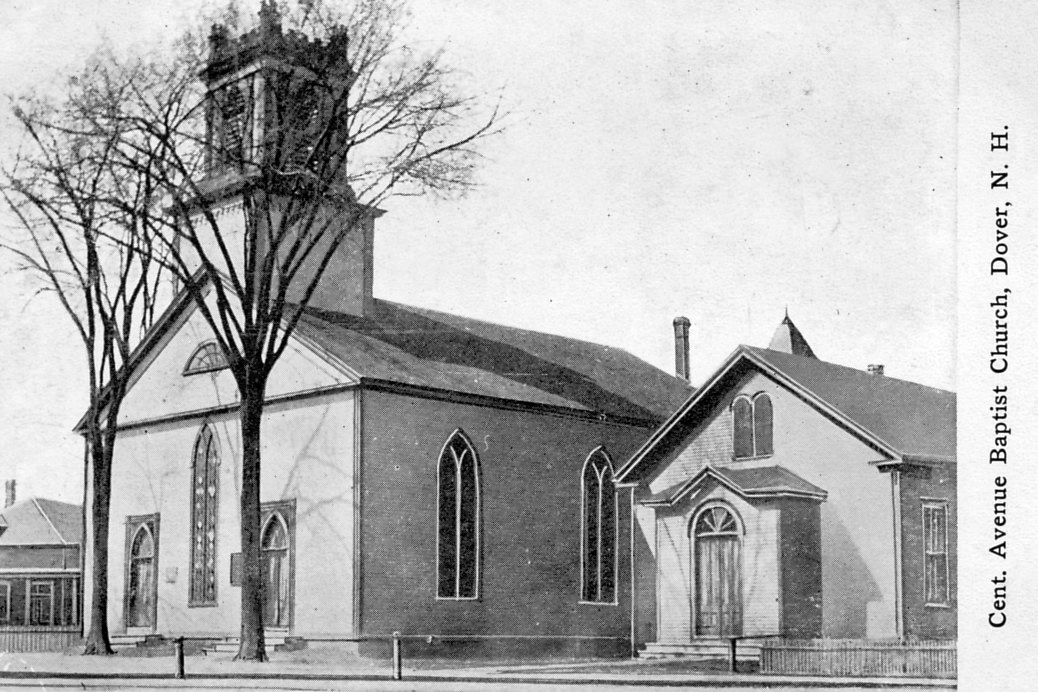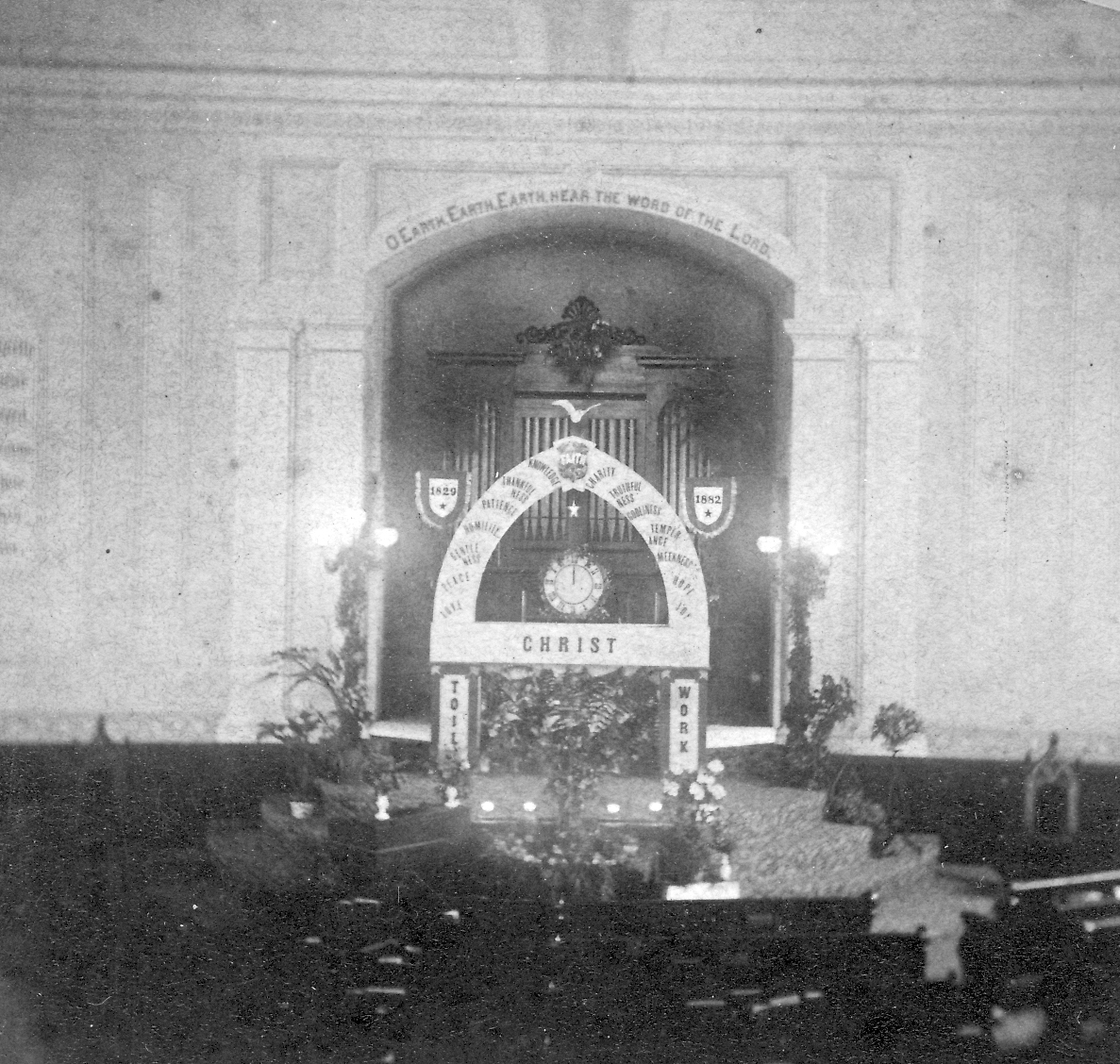Disclaimer
The Dover Public Library website offers public access to a wide range of information, including historical materials that are products of their particular times, and may contain values, language or stereotypes that would now be deemed insensitive, inappropriate or factually inaccurate. However, these records reflect the shared attitudes and values of the community from which they were collected and thus constitute an important social record.
The materials contained in the collection do not represent the opinions of the City of Dover, or the Dover Public Library.
Dover Baptist Church
The establishment of the mills in Dover brought with it the organizing of many churches. There were only two churches here in 1800, but by 1840 there were ten. Three of these were Baptist, and one of these, the Washington Street Free Will Baptists, was organized in 1840 and met in the building on Washington Street called the Odd Fellows Building.
 Free Will Baptist Church on Washington Street
Free Will Baptist Church on Washington Street
 Interior of the Free Will Baptist Church Easter 1896
Interior of the Free Will Baptist Church Easter 1896
In 1868, they built a new brick church here on the corner of Washington and Fayette Streets at a cost of $20,000. An 1882 fire gutted the structure and the present church was rebuilt in 1883.* In 1918, the Washington Street Free Will Baptist Church joined with the Central Avenue Baptist Church to form one congregation called the Dover Baptist Church. The Washington Street building would be used for church services while the Central Avenue building (now the site of Dunkin’Donuts) would become a recreation hall. The Central Avenue property was eventually sold and the money was used in 1951 to build the current Sunday School Building adjacent to the church.
 Central Avenue Baptist Church
Central Avenue Baptist Church
 Interior of the Central Avenue Baptist Church
Interior of the Central Avenue Baptist Church
In 1957, the church started buying houses behind the building to provide for a parking lot and this culminated in the present lot when the urban renewal project changed this area in 1977.
Then in 1981, the church was able to won this entire block when they purchased the house next door to the church building ( the only house left on the block). The house has just been renovated for use by church missionary families home on furlough. It is believed that this house was originally built at the Upper Factory Village and moved to this site in 1842. Many houses from the Upper Factory (called Williamsville after agent John Williams), which at one time was home to 300 inhabitants, were moved into town when the railroad tracks were laid into Dover through this village at the Upper Falls. It is said that by the next decade (the 1850s) no trace could be found that the village of Williamsville ever existed there.
From the June 1985 Heritage Walking tour booklet
* On the Morning of Tuesday, May 2, 1882, a fire broke out in a small brush factory near the church. The fire soon spread to the church itself, and in a painfully short time our church was a mass of smouldering ruins. In the afternoon a heavy wind blew the northern gable over. The bricks fell upon the audience room floor crushing it like an eggshell. A number of persons were standing in the vestry, and five of them were buried beneath the ruins. Four of these were taken out alive. The fifth, Judge John R. Varney, was not missed until late at night. A midnight search was made and he was found crushed and dead under the bricks and broken timbers....
The four people who were taken out of the ruins were Mrs. Stuart Clifford who suffered a broken leg, Mrs. Jed Whitney with a broken leg and arm, Mr. Job Burleigh, and a lad by the name of Dominique.
From Dover Baptist Church: History and Rededication, c. 1983.
This historical essay is provided free to all readers as an educational service. It may not be reproduced on any website, list, bulletin board, or in print without the permission of the Dover Public Library. Links to the Dover Public Library homepage or a specific article's URL are permissible.
